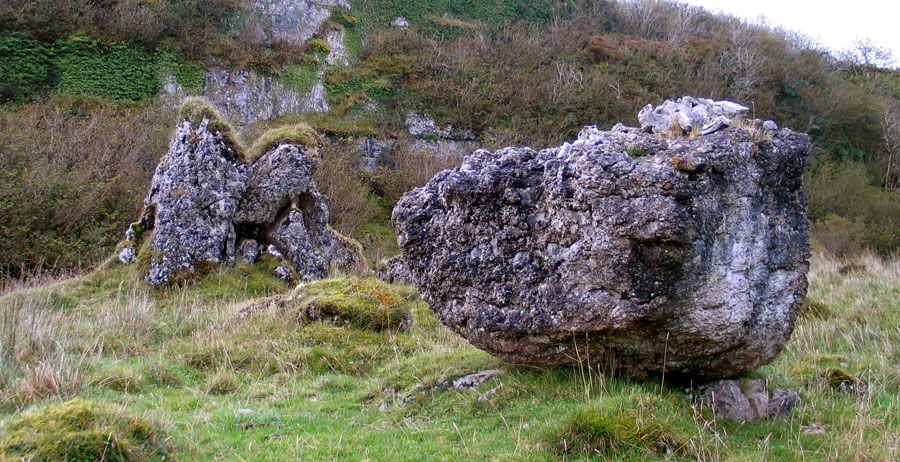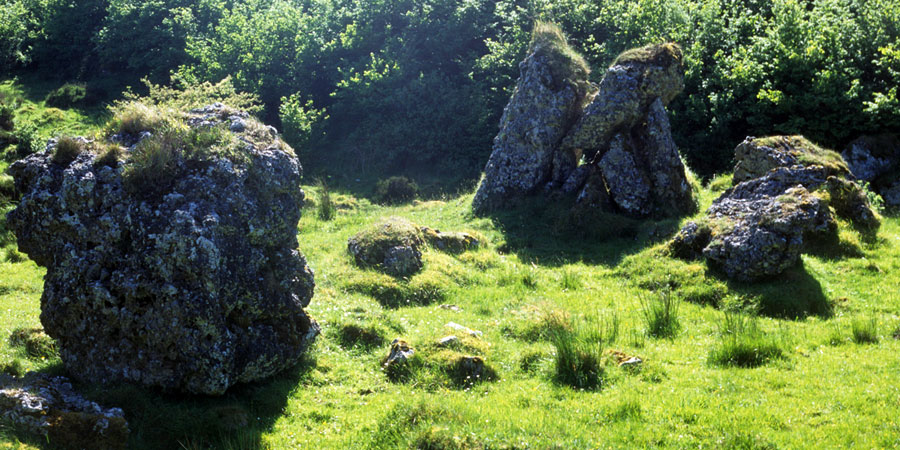The Stirring Rock
The Stirring Rock at Carrowkeel is an erratic rocking stone that was tipped off its pedestal in the 1940's, supposedly by agents of the Catholic church, who wanted to put an end to the pagan traditions of the local people, who used to come up and dance around the stone.
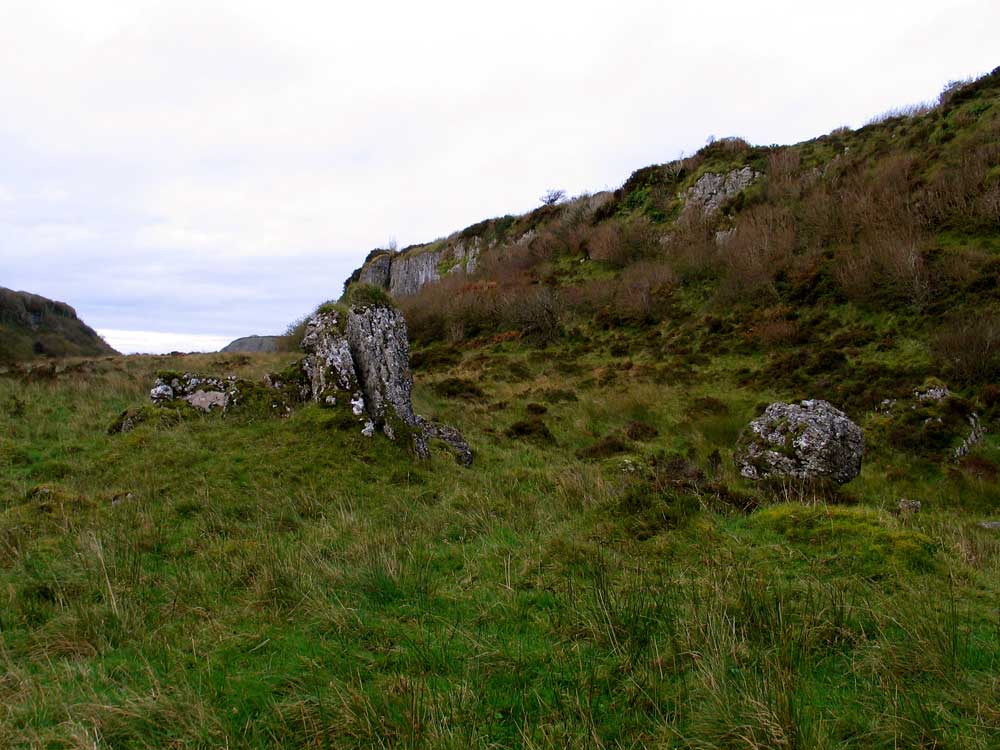
Beside the tumbled rock is some type of megalithic structure, possibly a dolmen. These sites are in a valley one kilometer south of Cairn F, the only Carrowkeel cairn visible from here. There are four small caves and a standing stone nearby.
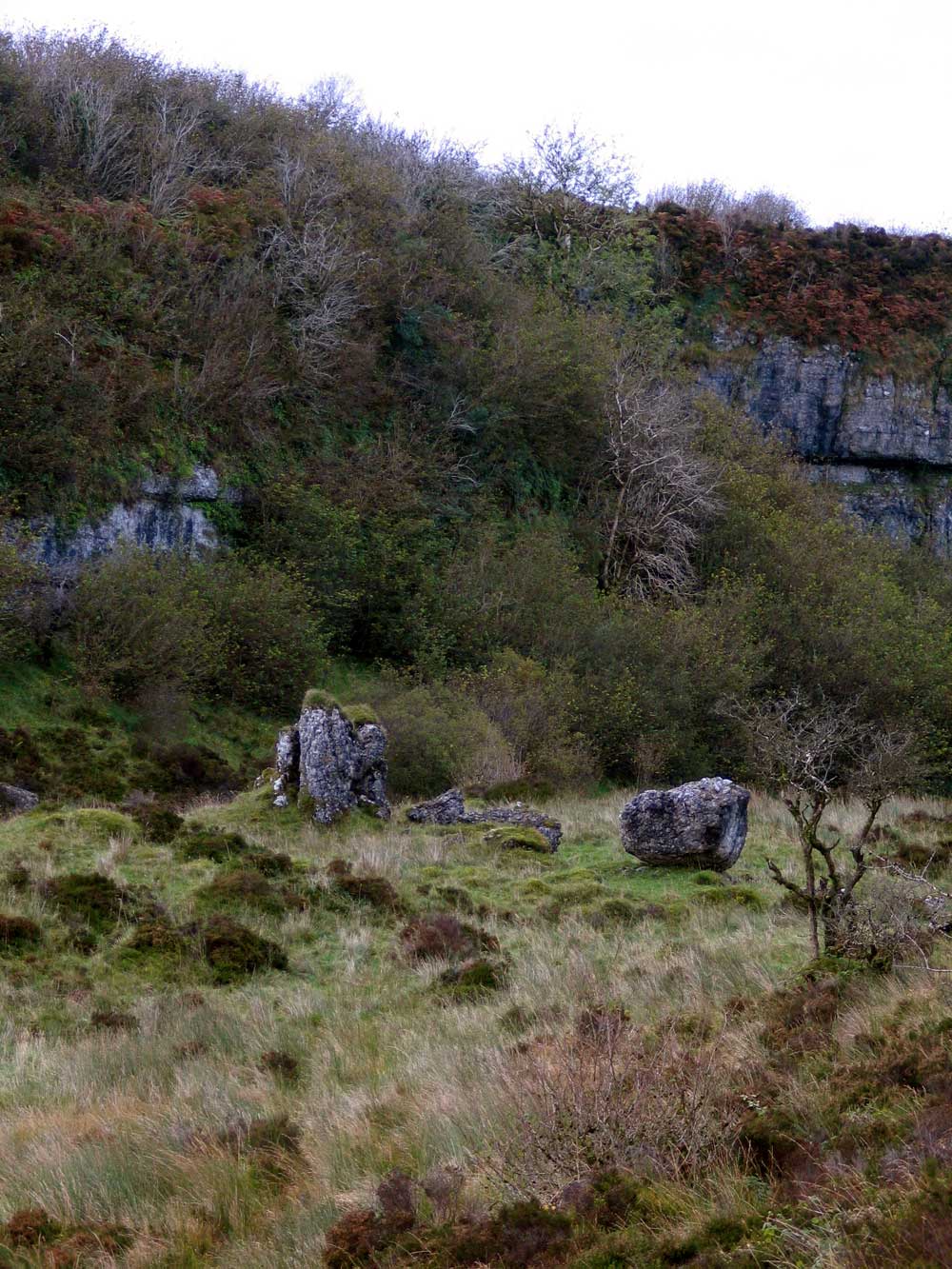
Dancing at megalithic sites is a well known feature of megalithic folklore. In the oldest megalithic traditions found in France, Spain and Portugal, the stone monuments were believed to grant fertility. Young women spent the night at a megalithic chamber hoping to find a husband, while newly wed couples hoping to conceive a child sometimes slept on the capstone of their local dolmen.
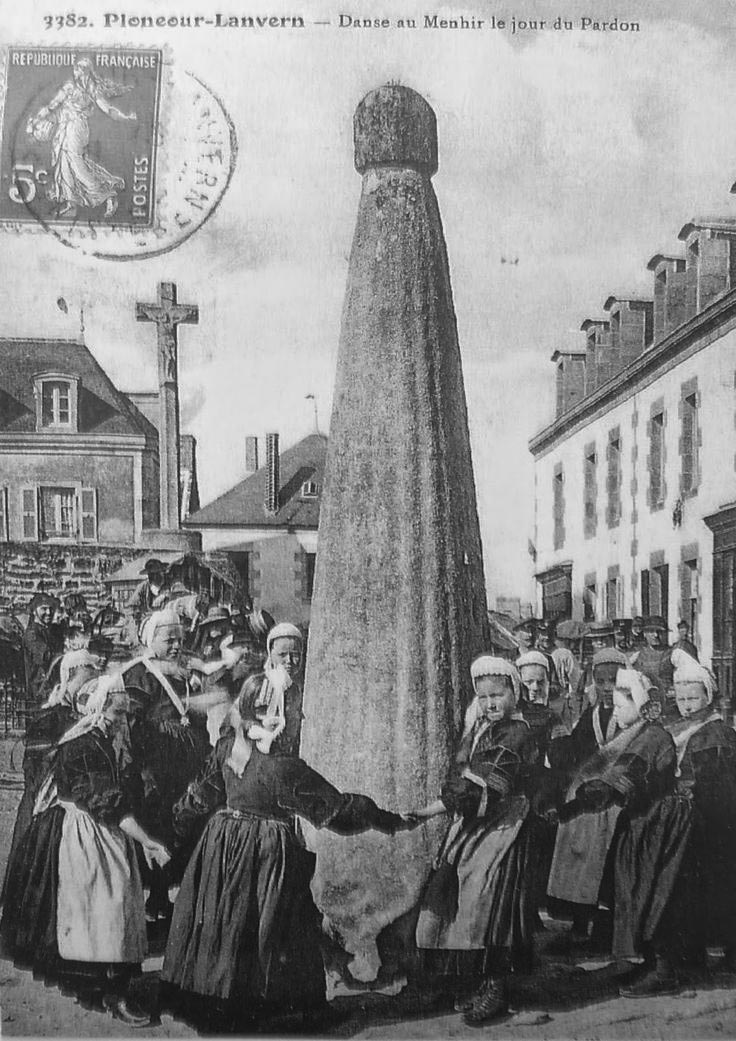
The Catholic church, of course, disapproved of such behavior and the Popes, at various times, have issued bulls prohibiting Christians from visiting ancient monuments. At some stage in the past, a team of 'good Christians', concerned for the morals of the people of south Sligo, tipped the Stirring Rock off its pedestal, and put an end to the rustic custom of dancing there.
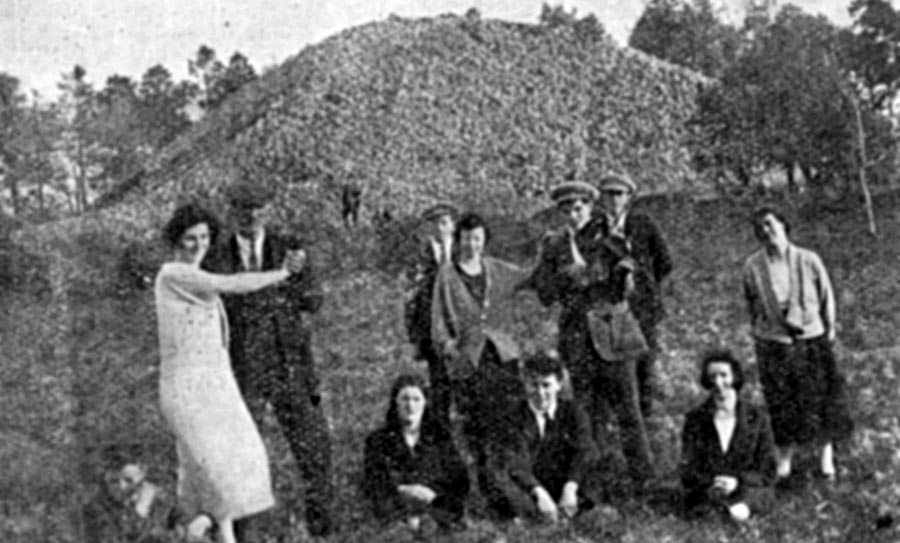
In recent years the Stirring Rock has been re-installed on its pedestal, but sadly it can no longer rock.

